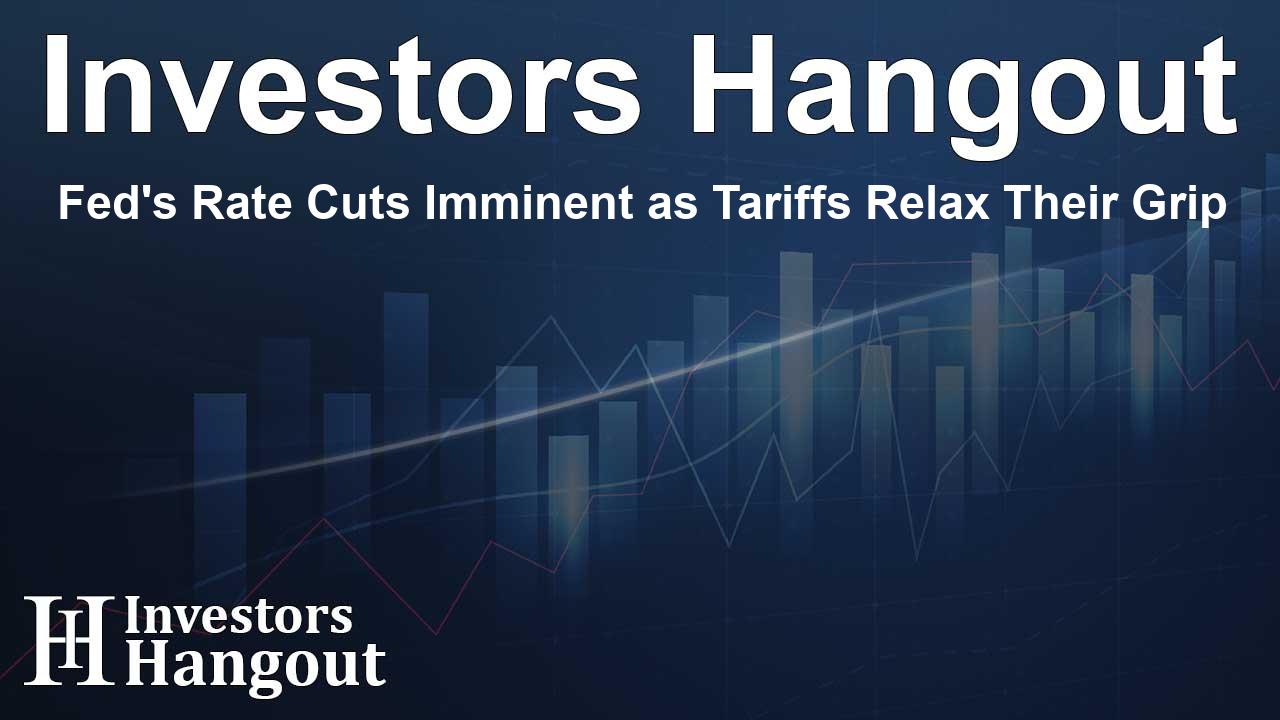Fed's Rate Cuts Imminent as Tariffs Relax Their Grip

Implications of Tariff Adjustments on Monetary Policy
Recent trends in inflation reflect a stability that has allowed monetary authorities the leeway to adapt their strategies. With the bulk of tariffs being absorbed effectively by corporate profit margins, the Federal Reserve is positioning itself to respond positively to the current labor market challenges and is expected to reduce interest rates starting this September.
Understanding Inflation Trends and Tariff Effects
The most recent data on consumer price inflation indicates that the expectations have been met. For instance, the Consumer Price Index (CPI) experienced a modest increase of 0.2% month over month, with an annual rise of 2.7%. The Core CPI, which excludes volatile items, ticked up 0.3% month on month and showed a yearly increase of 3.1%. Notably, energy prices have dipped by 1.1% in the same timeframe, and food prices remained stable, underscoring how the sectors most exposed to tariffs are currently navigating these challenges.
Analysis of Specific Sector Performances
Delving deeper into the various sectors, core goods excluding automobiles saw a 0.2% increase month on month after a substantial surge of 0.55% in June. Interestingly, new vehicle prices remained steady despite previous tariff impacts, while used vehicle prices rebounded by 0.5%. On the services side, airline fares significantly rose by 4% month over month, additionally supported by an uptick in medical care costs by 0.7%.
Future Inflation Expectations Amidst Housing and Energy Fluctuations
The landscape appears to show promise for inflationary pressures remaining low, primarily due to the flattening of house prices and easing rental rates. These factors are likely to keep inflation from breaching the 4% mark year over year this autumn, with predictions suggesting it might even dwindle below 2% by late next year. While some inflation threats persist, particularly from tariffs, small businesses are currently facing challenges in passing on these costs to consumers. In fact, recent surveys indicate a drop in the percentage of small firms expecting to raise prices in the coming months.
Evolving Economic Conditions and Fed Strategies
The current economic narrative differs significantly from the dramatic inflation surge observed in 2021 and 2022. Back then, soaring oil prices, coupled with a hot job market, exacerbated inflation, complicating monetary policy objectives. Presently, disinflationary trends coupled with softer housing costs suggest a more manageable inflation scenario for the Fed. The outlook for job growth has also softened. In light of a reduced GDP growth forecast from 2.5% to 1.5%, it’s anticipated that the Fed will proceed to cut policy rates in September, with additional reductions expected in October and December.
Conclusion: Preparing for the Shift
The economic signals are clear; with reduced tariff impacts, the Fed is poised to adjust its interest rate policy. This adaptive response reflects a broader understanding of the current economic landscape, setting the stage for potential shifts that could benefit various sectors in the near future.
Frequently Asked Questions
What is the current inflation rate trend in the US?
The current CPI indicates a moderate increase, with a 0.2% rise month-on-month and 2.7% year-on-year.
How are tariffs affecting consumer prices?
Tariffs are being largely absorbed by corporations, preventing significant price increases for consumers in various sectors.
What are the expectations for Fed interest rate cuts?
The Federal Reserve is expected to cut interest rates starting in September, likely continuing with additional cuts in subsequent months.
How does the housing market relate to inflation?
Declining house prices and stable rent trends are expected to mitigate inflation pressures significantly.
What sectors should we watch in the evolving economy?
Keep an eye on sectors like energy and housing as their performance will influence inflation trends and monetary policy moving forward.
About The Author
Contact Logan Wright privately here. Or send an email with ATTN: Logan Wright as the subject to contact@investorshangout.com.
About Investors Hangout
Investors Hangout is a leading online stock forum for financial discussion and learning, offering a wide range of free tools and resources. It draws in traders of all levels, who exchange market knowledge, investigate trading tactics, and keep an eye on industry developments in real time. Featuring financial articles, stock message boards, quotes, charts, company profiles, and live news updates. Through cooperative learning and a wealth of informational resources, it helps users from novices creating their first portfolios to experts honing their techniques. Join Investors Hangout today: https://investorshangout.com/
The content of this article is based on factual, publicly available information and does not represent legal, financial, or investment advice. Investors Hangout does not offer financial advice, and the author is not a licensed financial advisor. Consult a qualified advisor before making any financial or investment decisions based on this article. This article should not be considered advice to purchase, sell, or hold any securities or other investments. If any of the material provided here is inaccurate, please contact us for corrections.
